

Researched and Compiled by William J. Dorgan III
1780-1850: EMIGRANTS TO NEWFOUNDLAND
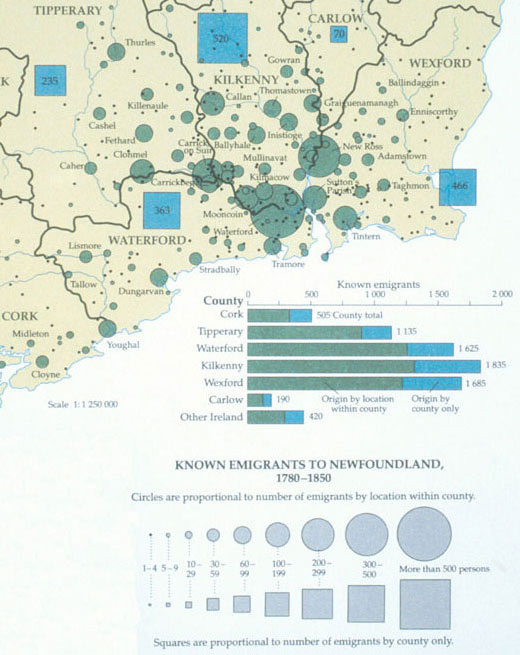
AQUAFORTE
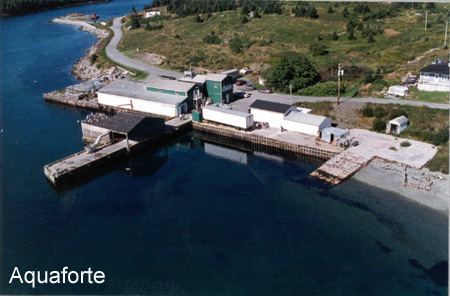
Maps from 1519 referred to the area as R.da aguea, meaning strong or fast water. This may have referred to a local waterfall that empties into the harbour. Later R.da aguea evolved into Agoforta and eventually Aquaforte.
By the late 1700s seasonal fishing crews were visiting the area, however it was not until the early 1800s that permanent settlement occurred when English fishermen began to stay year round.
Interesting Facts
• 1675 to 1715, Aquaforte supports a small seasonal fishery with ships from the English ports of Bideford and Barnstable visiting regularly.
• 1776, local Justice of the Peace, Robert Carver, applies to England for a small tract of land and becomes the first farmer in the community.
• 1833, the first police constable in the area is appointed.
• 1836, population grows to more than 125 residents.
• 1842, there are three schools operating in the area.
• 1902, Anders Ellefsen (A Norwegian) makes an application to build a factory to process whales.
• 1920s to 1930s, local businessmen build ice houses (insulated warehouses) to store ice for sale to passing schooners.
• 1972, Aquaforte is incorporated as a community.
Aquaforte (2006 Population 103) is a Canadian town on the south shore of Newfoundland's Avalon Peninsula in the province of Newfoundland and Labrador.
The town's economy has always rested primarily on fishing. In 1864 there was a population of two families. It is located 4 miles from Ferryland and 40 miles from St. John's by water. It has one of the safest harbors in the island and cod was its main industry. The first Waymaster was Peter Winsor. It was incorporated as a community in 1972. The population in 1911 was 192; in 1940 it was 176; in 1951 it was 167; 200 in 1956 and 172 in 1976; 133 in 2001; 103 in 2006.
In 2006, the population of the community reached its lowest in 100 years.
The Community Of: Aquaforte
The name Aquaforte on a map from 1519 referred to the area R.da aguea, meaning strong or fast water. This may have referred to a local waterfall that empties into the harbour. Later, K.da aguea evolved into Agoforta and eventually was named Aquaforte.
During 1675 to 1715 Aquaforte supported a small seasonal fishery with ships from the English ports of Bideford and Barnstable which visited on a regular basis. By 1776 local Justice of the Peace, Robert Carver applied to England for a small tract of land and became the first farmer in the community. By the late 1700’s seasonal fishing crews were visiting the area, however, it wasn’t until the early 1800s that permanent settlement occurred when English fishermen began to stay year round.
In 1833 the first police constable in the area was appointed. In 1836 the population of Aquaforte grew to more that 125 residents and by 1842 three schools were operating. In 1902 Anders Ellefsen of Noweigia made an application to build a factory to process whales. From the 1920s to 1930s the local businessmen built ice houses or insulated warehouses to store ice to sell to passing schooners.
In 1972 Aquaforte was incorporated as a community.
FERMUESE
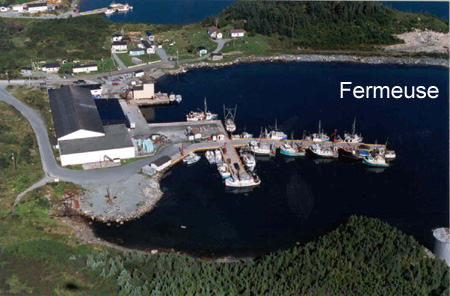
Maps dated from the early 1500s refer to the area as R.fermoso and Rio Fremoze. There is no agreement on the meaning of the word, some believe that it is a derivative of Fermosa which means beauty.
Settlement Fermeuse harbour was not settled until the 1700s, when formerly migratory fishermen from England decide to settle. By the late 1700s and into the 1800s Irish settlement increased.
Interesting Facts
1677, summer population is estimated to be around 160 men.
1732, census records indicate Fermeuse has 32 English masters, 267 male servants, 1 wife, 1 female servant, 40 children and 35 male Irish fishing servants.
1732, a Justice of the Peace and police constable are appointed to the community.
1845, first Roman Catholic Church opens.
1874, cod liver oil factory and lobster processing factory employ many residents.
1905, Michael Shallow (born in Fermeuse 1874) becomes British Empire Heavyweight Boxing Champion.
1967, Fermeuse is incorporated.
1920, St. Charles Borromeo Church built by parishioners
1990, the Fermeuse Marine Centre is constructed by the Federal Government for the repair and maintenance of fishing vessels.
The Community Of: Fermeuse
The town of Fermeuse was incorporated in 1967 and includes the communities of Fermeuse and Kingman’s Cove. First settled by the Portuguese in 1519, it derives its name from “Formosa” or “beautiful river” and has always been a fishing community. In fact, the Town’s motto is “Built on the Strength of the Sea”.
The current population of the community is about 450, many of whom continue to work in the fishery.
The town has several businesses including a newly refinished restaurant, a grocery store, a gas bar, video store, personal care home, hair salon, pub, lounge, a cabinet-making manufacturer, funeral home and the most recent business to set up is the manufacturer of cabinet/utility doors. Its primary industry however is built on the sea and the community is home to the Fermeuse Marine Centre and as well a fish plant. In recent years, activity at the Marine Centre has increased, primarily on upgrades and repairs to vessels. As well, the fish plant has returned to limited production over the last several seasons while acting as a transshipment point for sword fish and ice.
The volunteer community remains active with a local women’s institute, a volunteer fire department comprising members from both Fermeuse and the neighboring community of Port Kirwan, a Harbour Authority and as well a committee for the Parish Hall.
FERRYLAND
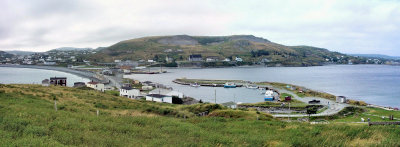
While there is some disagreement over the origin of the name, early French fishermen referred to the area as Forillon which meant "standing out of separated from the mainland", this evolved to become Ferryland. Colony of Avalon: Name was chosen in honour of old Avalon in Somersetshire, England where Christianity is believed to have taken root in the UK.
English settlers predominated in the early 17th century, later to be followed by Irish Catholics in the 18th and 19th century
.
Interesting Facts
* 1500s, Spanish, Portuguese, French and English fishermen begin visiting the area on an annual basis.
* 1621, twelve colonists under the direction of Captain Edward Wynne begin construction at the Colony of Avalon.
* 1628, Lord Baltimore (George Calvert) arrives to oversee the colony and brings with him 2 priests to establish the first English speaking Catholic mission in the British Territories of North America.
* 1629, Lord Baltimore leaves to found Maryland at Chesapeake Bay.
* 1637, Charles I awards the Grant of Newfoundland to Sir David Kirke, who soon becomes the first fish merchant of Newfoundland.
* 1865, Holy Trinity Roman Catholic Church is built. It is one of the last old stone churches to be built in Newfoundland.
* 1871, Ferryland Head lighthouse is built.
Ferryland is a town in Newfoundland and Labrador on the Avalon Peninsula. According to the 2001 Statistics Canada census, its population is 607.
Ferryland was established as a station for migratory fishermen in the late 16th century but had earlier been used by the French, Spanish, and Portuguese. By the 1590s it was one of the most popular fishing harbours in Newfoundland and acclaimed by Sir Walter Raleigh.
The land was granted by charter to the London and Bristol Company in the 1610s and the vicinity became the location of a number of short-lived colonies at Cuper's Cove, Bristol's Hope, and Renews and adjoined the colony of South Falkland. In 1620 the territory was granted to George Calvert, 1st Lord Baltimore who had obtained the holdings from William Vaughan.
Calvert appointed Edward Wynne to establish a colony which became the first successful permanent colony in Newfoundland growing to a population of 100 by 1625. In 1623, Calvert's grant was confirmed and expanded. The Charter of Avalon was granted to Lord Baltimore by James I. Dated 7 April 1623 it created the Province of Avalon on the island of Newfoundland and gave Baltimore complete authority over all matters in the territory. That same year Baltimore chose Ferryland as the principle area of settlement.
Ferryland was called "Farilham" by the Portuguese fishermen and "Forillon" by the French—it later became anglicized to its current name "Ferryland."
The Community of Ferryland
Founded by Lord Baltimore in 1621, Ferryland is not only one of the most historic communities in Newfoundland, but in all of North America. It would be difficult to find a place with more natural tourist appeal and historic significance. Here too, was the birthplace of religious tolerance and freedom of worship in the New World. Incorporated in 1971, Ferryland now has a population of just under 700 people.
Considered to be the government service center of the Southern Shore, Ferryland has numerous businesses and organizations including medial and police facilities. It also is the anchor for tourism with the Colony of Avalon Archaeology Dig Site/Interpretation Centre, The town recently passed its 2002 budget with no property tax increase, and is predicting future growth and stabilization.
Ferryland has the greatest potential to develop as a major tourism destination, and plans to move forward with leadership, commitment and appropriate development. As long as history is important, Ferryland has a rightful place and as long as tourism is important, Ferryland has a rightful future.
RENEWS
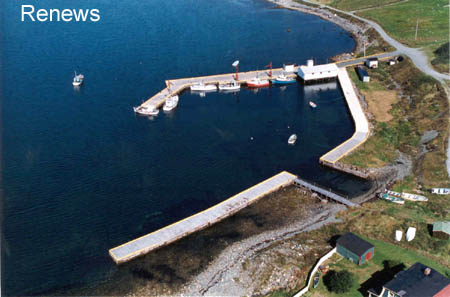
The village was first settled by migratory fisherman and then by colonists. The colony was first proposed in 1610 by the London and Bristol Company which had previously started a colony at Cuper's Cove but settlement was delayed by the presence of pirate Peter Easton. In 1615, the territory was sold to William Vaughan who initially sent settlers to Aquaforte. Around 1617 Governor Richard Whitbourne moved six remaining colonists to Renews but they left by 1619. Vaughan soon sold land that crossed the Avalon Peninsula, including Renews harbour to Henry Cary, 1st Viscount Falkland who named the territory South Falkland.
According to local legend, the Mayflower landed at Renews in 1620, where it picked up water and supplies before sailing on to Plymouth Rock.
The Community Of: Renews-Cappahayden
Renews is originated from the French word rogneux meaning rugged or scappy shore. Cappahayden, originally referred to as Broad Cove, is believed to be renamed after a village in Ireland. The town was first settled in 1618 and in 1620 the Mayflower stopped for supplies on the way to America. Incorporated in 1967, the current population is 423.
Employment is centered around the fishery, either in harvesting or working in neighboring plants. Some residents travel to St. John’s to work in the public sector.
Businesses in the community include: a meat shop, service station, two grocery stores, hair salon, Bed and Breakfast and a pottery enterprise.
Attractions of note include the William Jackman Museum, the Mount Gun Battery, licensed salmon river and a replica of Our Lady of Lourdes Grotto. The grotto is built on a “mass rock”, the only one of its kind in North America. The mass rock was the place where residents celebrated mass secretly in the 1700s when Roman Catholicism was suppressed in Newfoundland.
Services include a church, community center, two wharves, post office and swimming pool.
CAPPAHAYDEN
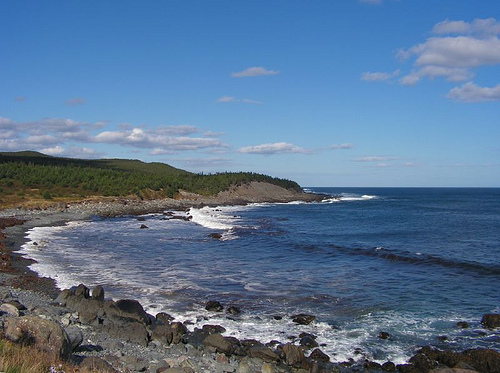
Cappahayden, once called Broad Cove, can date inhabitants located there in the late 1700's. Its location was reported by William Vaughan as early as 1626 when it was noted on a map as Vaughan's Cove. The name Cappahayden was given by Father John Walsh after his birthplace, Cappahayden, Kilkenny. The name Cappahayden was approved by the Newfoundland Nomenclature Board in 1913.
Just south of Cappahayden is the site of the tragic sinking of the SS Florizel at Horn Head Point ( [show location on an interactive map] 46°50′56″N, 52°56′20″W), near Chance Cove Park.